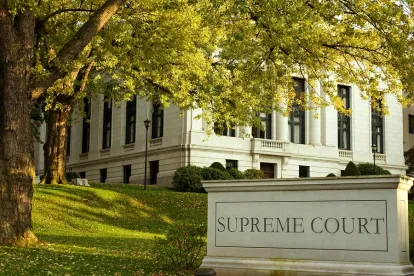On January 20, 2016, the Supreme Court of the United States handed down its decision in Montanile v. Board of Trustees of the National Elevator Industry Health Benefit Plan. The plan had paid healthcare benefits on Montanile’s behalf arising out of serious injuries he sustained in a car accident involving a drunk driver. Montanile and his attorney sued the driver, the third party, and obtained a significant settlement. The plan sought reimbursement under its subrogation clause. Montanile’s counsel refused the request, and Montanile subsequently spent the settlement funds.
The plan brought suit under ERISA’s enforcement scheme, claiming that it was seeking “equitable relief” despite the fact that it could not trace the reimbursed amount to a specific property or account in Montanile’s possession. Regardless, the plan contended that it could recover the reimbursement from Montanile’s general funds. The district and circuit courts agreed. The United States Supreme Court did not.
The court reiterated its prior holdings that ERISA limits the relief a plan may obtain against a participant to that which is purely “equitable” – in other words, a remedy that was traditionally provided by ancient courts of equity. Because Montanile’s recovery could no longer be traced to an identifiable asset under his control, traditional equitable remedies – e.g., an order requiring Montanile to disgorge the property – were not available. Requiring Montanile to reimburse the plan through the liquidation of his “general assets” was legal, not equitable, relief according to the court.
The battle between plans and plan participants over the scope and enforceability of subrogation rights has been in play since 2002, when the court first confronted the issue in Great-West Life & Annuity Ins. Co. v. Knudson. The cat-and-mouse game continues as participants and their lawyers try to shield recoveries from the reach of subrogation provisions. Plans respond by drafting subrogation clauses so that they extend as far as the court’s interpretation of “equitable relief” will allow. Typically, such a subrogation clause will attach a “lien by agreement” to any third-party recovery up to the limit of amounts reimbursed by the plan. Such a lien comports with the court’s strictures of “equitable relief” because a “constructive trust” is imposed over some or all of the recovered funds. If the funds exist, they may be attached by court order.
In light of the Montanile decision, the advantage has shifted once again to the plan participant. To thwart the plan’s equitable relief, the participant must only wrest control of the recovered funds and spend them. Poof! According to the court, Congress has left the plan without a remedy. The participant is free to dissipate the funds with impunity.
There are strategies available to swing the pendulum back in favor of the plan’s subrogation rights. To do so, existing plan provisions must be carefully reviewed. Language can be added to expand the “lien by agreement” to cover the burden and expense of cajoling the return of the third-party reimbursement or litigating to secure it. These provisions may never be utilized if the third-party recovery is immaterial. However, if the recovery is large, without them, the plan may be left, literally, holding the bag.







 />i
/>i

